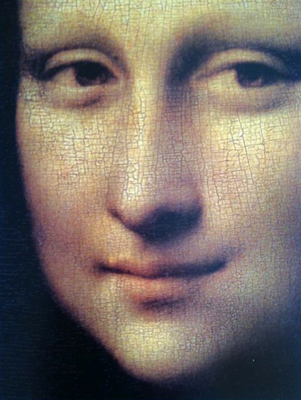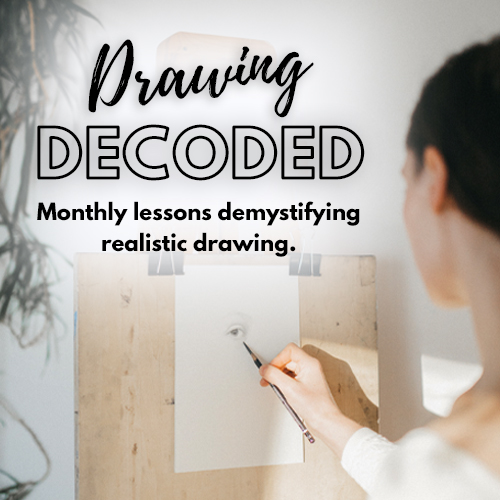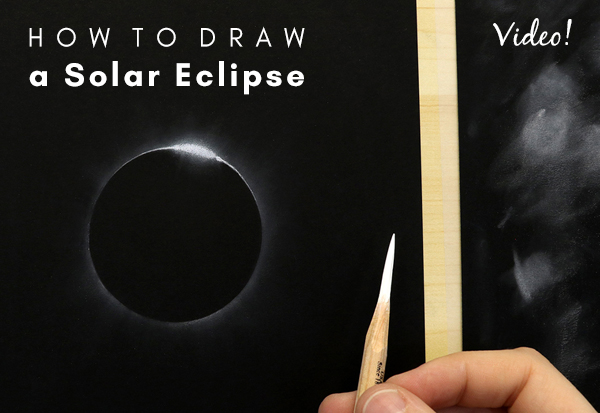- Home
- Drawing Tutorials
- Samantha Haring
An Interview with Samantha Haring
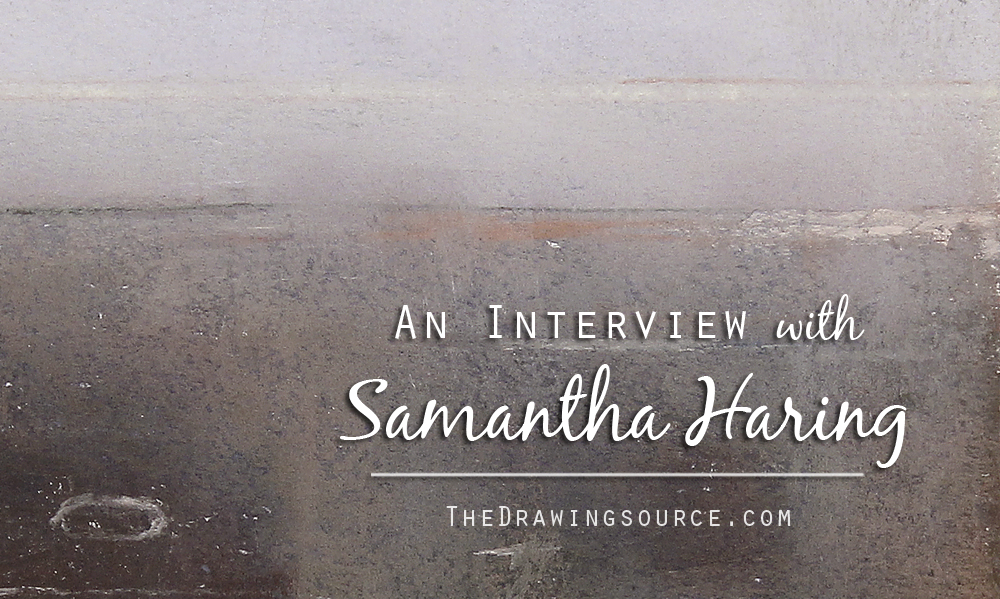
Spaces where objects once were, crevasses between floor boards, and the ways in which residue collects in a room are but a few of the focal points in Samantha Haring's paintings of studio interiors.
The more attention one pays to these scenes of forgotten corners and seemingly blank expanses, the greater the reward. Where one expects there to be nothing, there unfold hidden histories and resonant psychological landscapes.
Post it notes, electrical outlets, and enigmatic marks on the floor emerge as emotive characters of quiet but poignant dramas. The way in which the wall meets the studio floor becomes as nuanced and captivating as a horizon or a sunset.
I am delighted to present this interview with Samantha, in which she discusses the illusion of emptiness, dust, and drawing as a daily practice of mindfulness.
An Interview with Samantha Haring
Marina Fridman: Can you talk about your fascination with interior spaces? For example, when did it begin, how has it developed, what compels you to continue exploring this subject matter, and the like?
Samantha Haring: I've always loved interior spaces – they imply the figure even when the space is empty. My current work is the continuation of a series I started in graduate school. In the summer of 2012 I spent two weeks in the Netherlands. I've always loved Dutch interior paintings, and studying so many in person had a profound impact on the way I understand space. Until that trip, my subject matter had been all over the place – still lifes, figures, landscapes... but when I came back to my studio I knew I wanted to make images of interiors. Space is the place, after all.
Since then I have focused on observational paintings of my studio spaces, in various stages of cleanliness and disarray. (The latter is a far more common state.) For me, the great reward of working from life is that the same subject matter is always new and exciting. The same strip of baseboard takes on an entirely different color and character based on the time of day, the amount of dust in the air, and the objects that happen to be nearby... and it changes constantly! Trying to capture the essence of something, quickly, before it changes, is endlessly fascinating to me.
"Trying to capture the essence of something, quickly, before it changes, is endlessly fascinating to me."
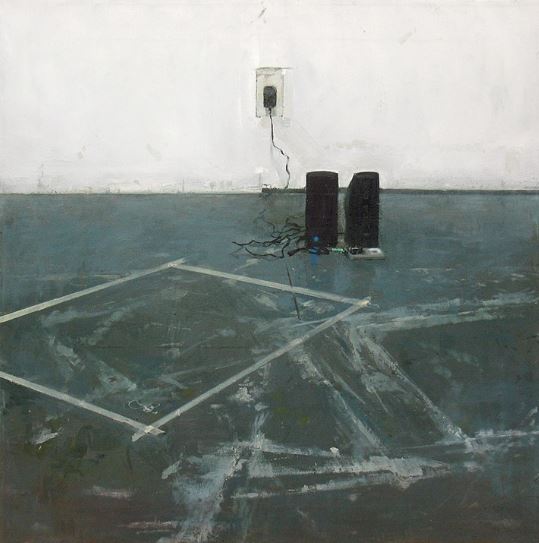 "Pair", oil on canvas, 2014
"Pair", oil on canvas, 2014
Marina Fridman: Can you give us some insight into your process? How do you begin a drawing or painting, and what stages do your works tend to go through?
Samantha Haring: It always starts with looking. I am an observational painter; I work primarily from life and strive to create images that capture moments in time, reflecting my own perceptions of reality. For me, the image comes first... but the images I tend to want to make all communicate generally the same idea. I am interested in the duality of absence and presence: the way that empty spaces can imply a human presence by the residue left behind. Emptiness is an illusion.
My process with each piece goes something like this: Look, draw, look again, redraw, mix colors, layer paint, look, scrape paint away, remix colors, question my life choices, turn the painting upside down, fix the composition, turn the painting right-side up, look, mix colors... repeat.
My recent work slides back and forth on the spectrum from realism to abstraction. Although everything I make is grounded in reality, some pieces shift more towards abstraction and others to a kind of painterly realism as they develop. At some point, usually after many hours spent staring at my subject matter, I have to listen to what the painting needs instead and trust that will be the right direction.
"I am interested in the duality of absence and presence: the way that empty spaces can imply a human presence by the residue left behind. Emptiness is an illusion."
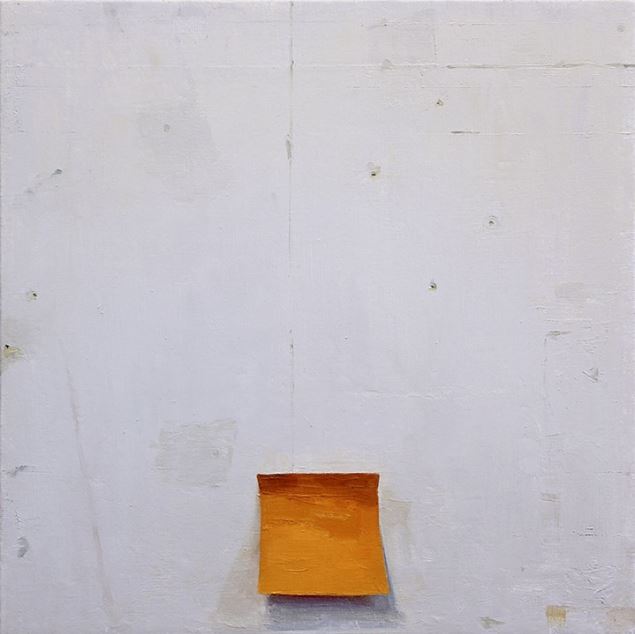 "Rough Patch", oil on canvas, 2016
"Rough Patch", oil on canvas, 2016
Marina Fridman: What new directions are you currently exploring (or are looking forward to exploring in the future)?
Samantha Haring: My subject matter changes every time I move studios. At the moment I'm exploring a new space with a new palette, brighter colors and entirely new dust. I'm also experimenting with making larger pastels. Well, larger for me, anyway. Up to this point, my drawings have been on a very intimate scale – about 13" square – which has worked for their quiet subject matter. It has been a while since I worked with a larger scale, and lately I've been feeling the need to take up more space, both literally and metaphorically. I'm curious to see what happens to these quiet studio spaces when the image becomes larger, and how that will affect their content.
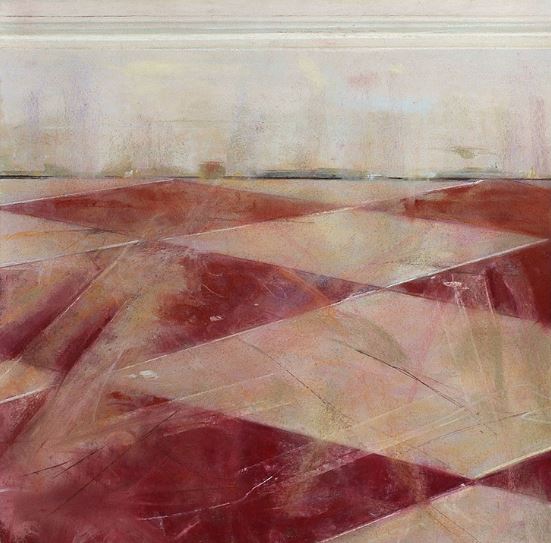 "Red Queen", chalk pastel on paper, 2017
"Red Queen", chalk pastel on paper, 2017
Marina Fridman: Your predominant media seem to be oil and pastel. Does working with each medium create a different experience for you, or put you into a different state of mind?
Samantha Haring: Yes, absolutely. Working in oil is a much slower process for me. It requires precise attention to color mixing, knowledge of the amount of oil in each pigment, and the patience to wait until the paint is at the proper tackiness before adding the next layer. Working in pastel is a much more visceral process for me, perhaps in part because there isn't the intermediary tool of the brush between me and the surface. There is something about the connection between hand, chalk, and paper that is more immediate. I think I make better decisions, faster, when I draw.
I am also strangely less attached to pastel drawings in the early stages. So much energy is invested in a painting before it even begins – building stretcher bars, stretching the canvas, taking care with the corners, gessoing – the surface is already a precious object before the first brush stroke is made. Paper sometimes feels less precious, which gives me the freedom to take more risks with the work.
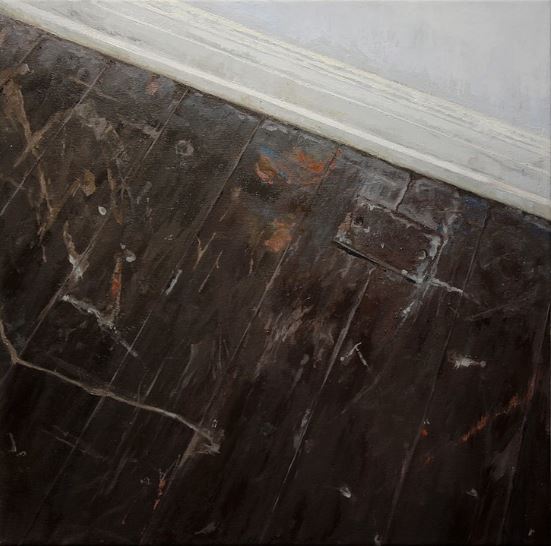 "Dislocation", oil on canvas, 2015
"Dislocation", oil on canvas, 2015
Marina Fridman: You work on a fairly intimate scale, especially with your pastel drawings. Is scale important to the experience that you want to create for the viewer?
Samantha Haring: Certainly. I do tend to work easel-size. I am interested in creating an intimate experience for the viewer. Small works by definition don't have the physical presence that a wall-sized piece does, but that doesn't mean they can't be just as impactful (sometimes even more so). The spaces I paint are quiet, the ambience subdued. I want the viewer to come away with a greater appreciation for the forgotten, the overlooked, and the mundane. If you want people to pay attention, you have to give them something worth paying attention to. It can be easy to glimpse a large work from across the room and mistakenly think you've seen it in all its complexity. Small work requires closer engagement – you have to get nose to nose with it in order to truly understand it. Much like life, actually. It's easy to skim along the surface; paying attention requires effort.
"I want the viewer to come away with a greater appreciation for the forgotten, the overlooked, and the mundane."
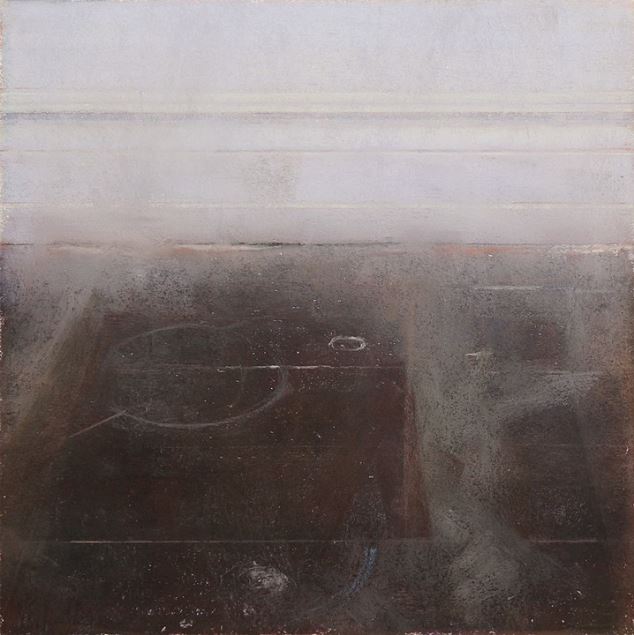 "Imprint", chalk pastel on paper, 2016
"Imprint", chalk pastel on paper, 2016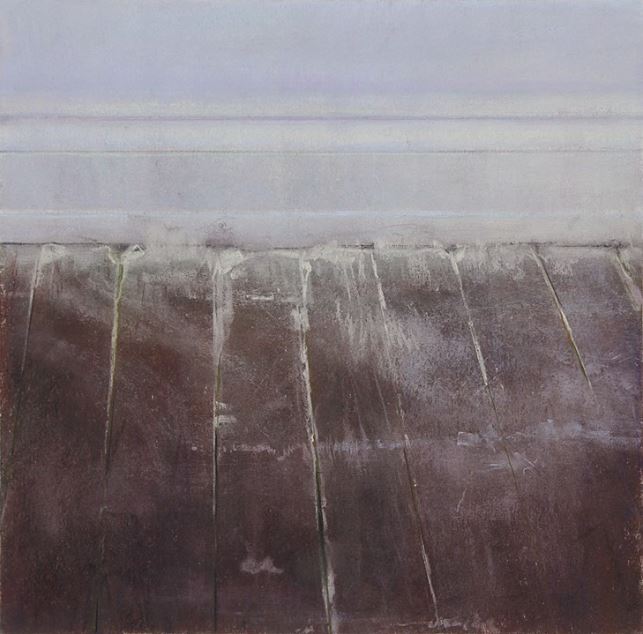 "Scar Tissue", chalk pastel on paper, 2016
"Scar Tissue", chalk pastel on paper, 2016
Marina Fridman: What is drawing to you, and what role does it play in your work?
Samantha Haring: Drawing is everything. It is the core of every strong artistic practice. Drawing is the lens through which we describe and understand the world. It is the language we use to communicate – it is visceral, immediate, and powerful. I can usually explain something faster through drawing than I can through words. Drawing is also grounding, not unlike some yoga practices; regular sketching is one of the ways I center myself and cultivate attention through daily mindfulness.
In my other life as an educator, I mainly teach drawing classes. Foundations drawing classes are my favorite – there is something uniquely rewarding about teaching freshmen. They are eager and without so many of the bad drawing habits that accumulate over a lifetime. I tell my students that observational drawing is about seeing; it is a meditative process, Zen-like, that requires forgetting everything you think you know and surrendering to this precise moment.
"Observational drawing is about seeing; it is a meditative process, Zen-like, that requires forgetting everything you think you know and surrendering to this precise moment."
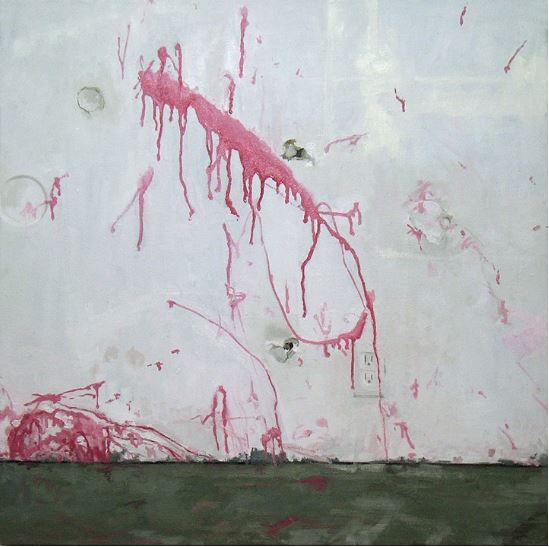 "Spill", oil on canvas, 2013
"Spill", oil on canvas, 2013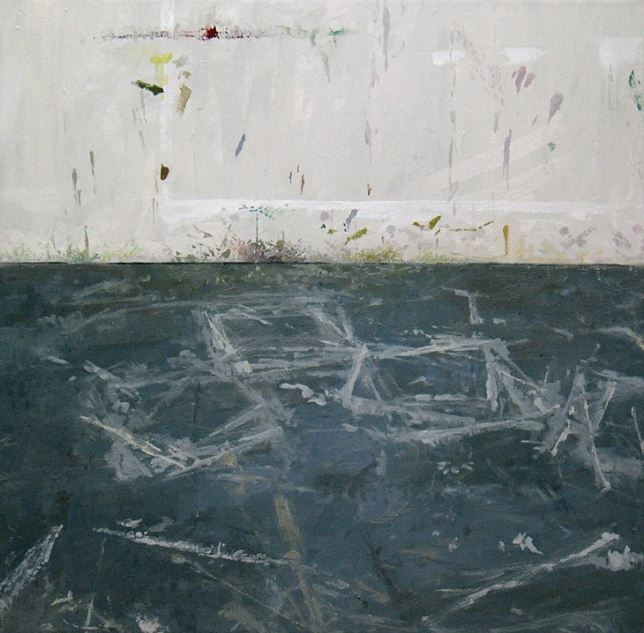 "Dot", oil on canvas, 2013
"Dot", oil on canvas, 2013
Marina Fridman: What artists, either historical or contemporary, have had the greatest influence on your work?
Samantha Haring: Velazquez, Vermeer, Emanuel de Witte, Chardin, Corot, Giorgio Morandi, Lucian Freud, Euan Uglow, Marion Kryczka, Frank Trankina.
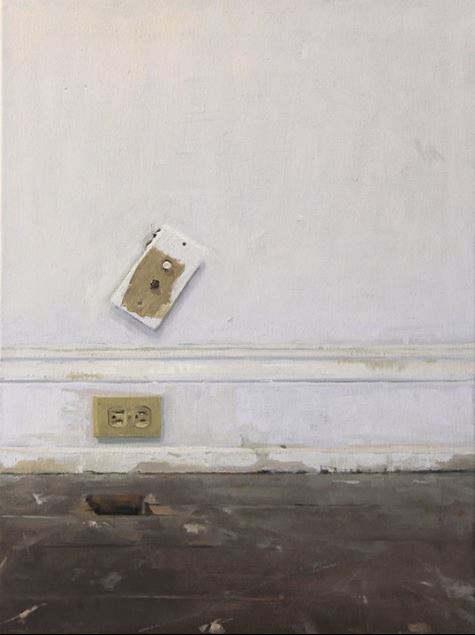 "Leap Year", oil on canvas, 2016
"Leap Year", oil on canvas, 2016
Marina Fridman: Were you ever given a piece of advice about drawing, or art in general, that you will always remember?
Samantha Haring: Many, but two in particular are always on my mind:
"Create like a god, command like a king, work like a slave." – John Wood
On observational work: "It's not just about describing what you see, it's about understanding what you see." – Marion Kryczka
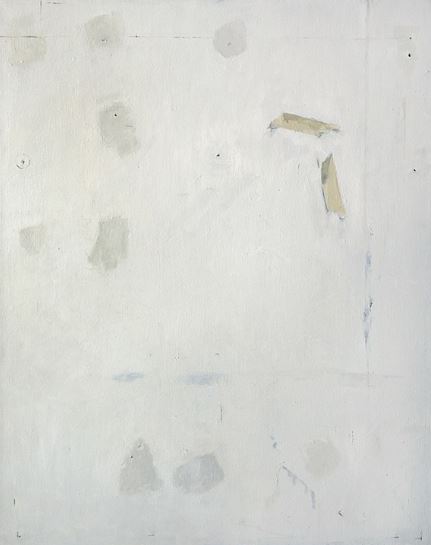 "Provisional", oil on canvas, 2015
"Provisional", oil on canvas, 2015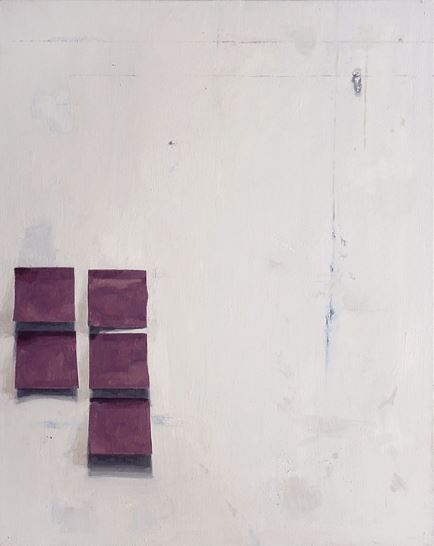 "Perennial", oil on canvas, 2015
"Perennial", oil on canvas, 2015
Marina Fridman: Being an avid reader, could you share a few books that have influenced you, or that you find yourself returning to over and over again?
Samantha Haring: I love this question.
Fiction: The Master and Margarita by Mikhail Bulgakov, Invisible Cities by Italo Calvino, Mrs. Dalloway by Virginia Woolf
Poets: John Ashbery, William Carlos Williams, Wallace Stevens, Robert Burns
On Art: Hawthorne on Painting by Charles Hawthorne, The Interaction of Color by Josef Albers, Six Names of Beauty by Crispin Sartwell
Currently on my nightstand: The History of Pictures by David Hockney and Martin Gayford
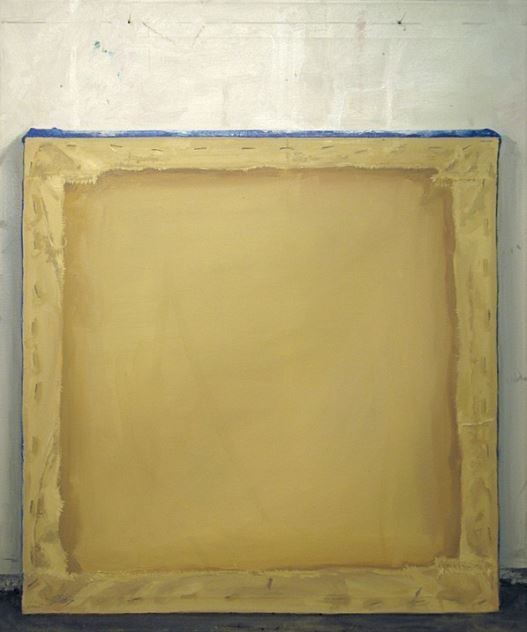 "None", oil on canvas, 2013
"None", oil on canvas, 2013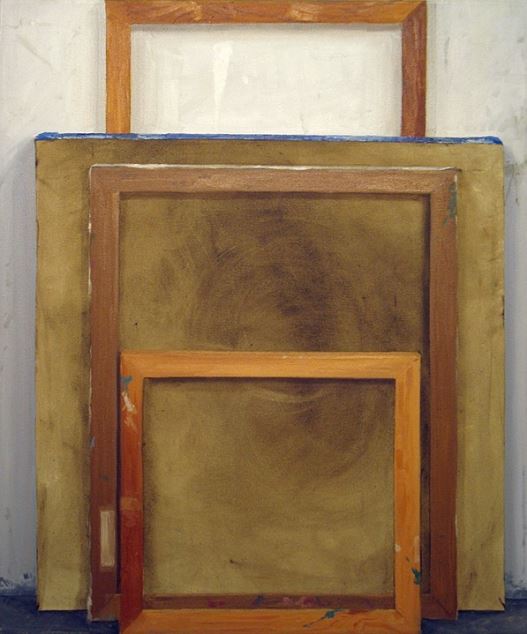 "Sext", oil on canvas, 2013
"Sext", oil on canvas, 2013
To view more of Samantha's work, please visit: SamHaring.com
B O N U S: Download this interview!
(Plus, get a weekly newsletter and access to the Members-Only Drawing Resource Library!
You may also be interested in ...
Return to Inspirational Drawings & Interviews
Return to the Homepage from An Interview with Samantha Haring
